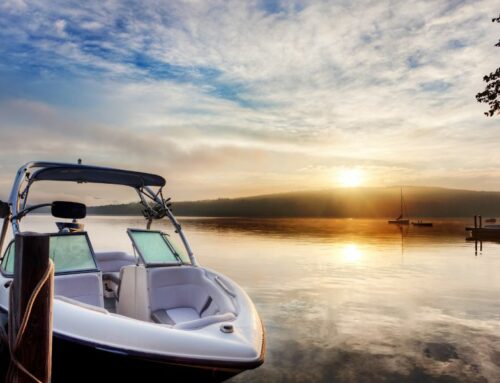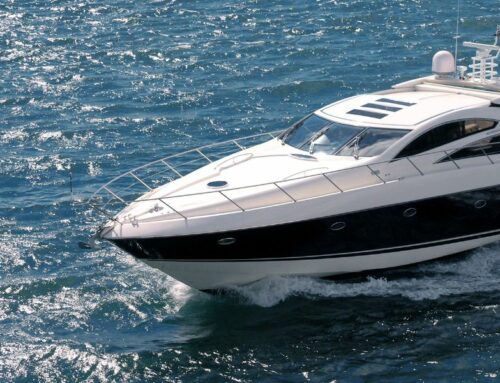
We all want to boat in calm, pleasant weather, but sometimes that’s just not the case. When the weather turns on a dime, you want to be prepared to handle it with care, expertise, and precision. Our Smooth Moves team has tips for boating in big waves, which can help you safely navigate back to shore.
How Waves Are Measured (And Why It Matters)
There are four elements we look at when measuring waves:
- Height (Bottom of the wave to the crest)
- Length (Crest to crest)
- Steepness (Angle from the crest to the bottom of the wave)
- Period (Time between crests)
Noting these elements, even simply eyeballing them, can help inform your plan. Are you noticing an increase in wave height or steepness? Stay put, especially if you’re far from shore—conditions are getting worse.
Is wave length or the time between waves increasing? That could be a sign that the storm is dying down. Watch the direction of the waves to see how the wind is moving.
Successfully Boating in Big Waves
If you’re caught out on the water during inclement weather, the best thing you can do is keep your head. Making educated decisions will help get you, your passengers, and your boat safely back to shore.
→ Do watch out for waves that are comparable in size, power, and shape to your boat. Your best bet is to wait where you are until the waves die down.
→ Don’t forget to put on your life jacket. In fact, this should be mandatory for everyone on your boat. Boating in big waves can make plenty of passengers nervous, and rightly so—this safety step helps calm nerves and protect everyone onboard.
→ Do look up the standard wave heights for the waters you’re heading to and prepare an escape plan before going out. However, remember that those standards are just a guide, and waves can be larger.
→ Don’t immediately head back to shore without a plan. The closer you are to the shore, the more shallow the water gets, which means the waves can be bigger.
→ Do orient your boat so that oncoming waves break along either side of it instead of head-on.
→ Don’t go too fast through the waves trying to race back to shore. Instead, reduce your speed and concentrate on strategic steering.
What Wind Speed Creates Choppy Water?
Wind at or higher than fifteen knots, or 17 miles per hour, can lead to choppy, unmanageable water.
Sick of the Swells? Make Your Ride a Smooth One
We hope your time on the water is nothing but smooth sailing (so to speak!). Our boat seat suspension systems protect your back from even the gentlest waves.
Want more boating content? Stay tuned to our Smooth Moves blog for more boating and fishing tips. Our articles are for passionate anglers like yourself looking to take care of their backs while enjoying all the water has to offer.
Related Reading: What You Need to Know When Driving a Boat in Rough Water








